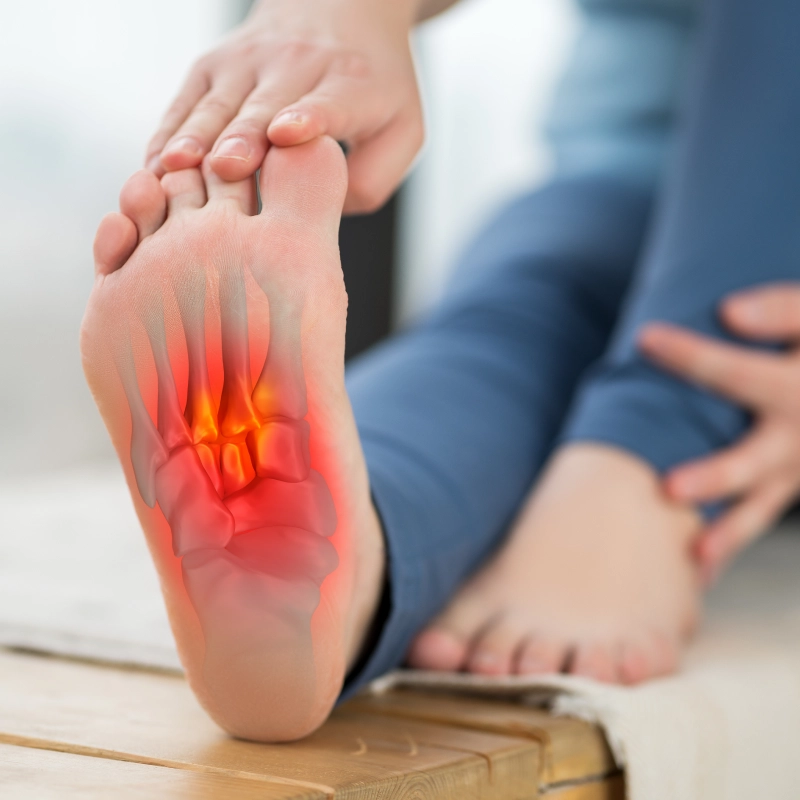
Plantar fasciitis is a common foot condition that affects millions of people worldwide. It is best described as inflammation and irritation of the plantar fascia, a thick band of tissue that connects the heel bone to the toes. This condition can cause significant pain and discomfort, making it important to understand its causes, symptoms, and available treatment options.
Causes
Plantar fasciitis often results from repetitive strain or overuse of the foot, leading to micro-tears in the plantar fascia. While the exact cause may vary from person to person, certain factors increase the risk of developing this condition. These plantar causes include:
- Excessive physical activity: Engaging in activities that put excessive stress on the feet, such as running, dancing, or jumping, can contribute to the development of plantar fasciitis.
- Foot mechanics: Having flat feet, high arches, or an abnormal walking pattern can put additional strain on the plantar fascia.
- Age and weight: Plantar fasciitis is more common in individuals between the ages of 40 and 60, as well as in those who are overweight or obese.
- Improper footwear: Wearing shoes that lack proper arch support or cushioning can increase the risk of developing this condition.
Symptoms
The most common symptom of plantar fasciitis is heel pain, typically experienced as a sharp or stabbing sensation. This pain is often worse in the morning or after prolonged periods of rest, and it tends to improve with movement.
Other symptoms may include:
- Pain that worsens after activity or prolonged standing.
- Tenderness along the bottom of the foot, especially near the heel.
- Stiffness and limited range of motion in the foot.
- Swelling or redness in the affected area, although this is less common.
Treatment
Treating plantar fasciitis can be sometimes very frustrating Fortunately, plantar fasciitis can often be managed effectively with conservative treatment methods. Some common plantar fasciitis treatment options include:
- Rest and ice: Avoiding activities that exacerbate the pain and applying ice to the affected area can help reduce inflammation and provide relief.
- Stretching exercises: Regularly stretching the calf muscles and plantar fascia can help alleviate symptoms and prevent further injury.
- Supportive footwear: Wearing shoes with proper arch support and cushioning can help distribute weight evenly and reduce strain on the plantar fascia.
- Orthotic devices: Custom-made shoe inserts or orthotic devices can provide additional support and help correct any foot abnormalities.
- Physical therapy: A physical therapist can provide targeted exercises and techniques to strengthen the foot muscles and improve flexibility.
- Medications: Over-the-counter pain relievers, such as ibuprofen or acetaminophen, may be recommended to manage pain and reduce inflammation.
- Extracorporeal shockwave therapy (ESWT): In severe cases, ESWT may be used to deliver shockwaves to the affected area, stimulating healing and reducing pain.
- Home therapy: Home therapy that often works is a deep massage of the arch using a golf ball and then stretching the calories muscle.
Persisting with treatment plans is Paramount in getting relief from this irritating issue.
Plantar fasciitis can be a debilitating condition, but with proper understanding and treatment, most individuals can find relief from the pain and resume their regular activities. By taking appropriate measures and making necessary lifestyle modifications, individuals can effectively manage plantar fasciitis and prevent future recurrences.

